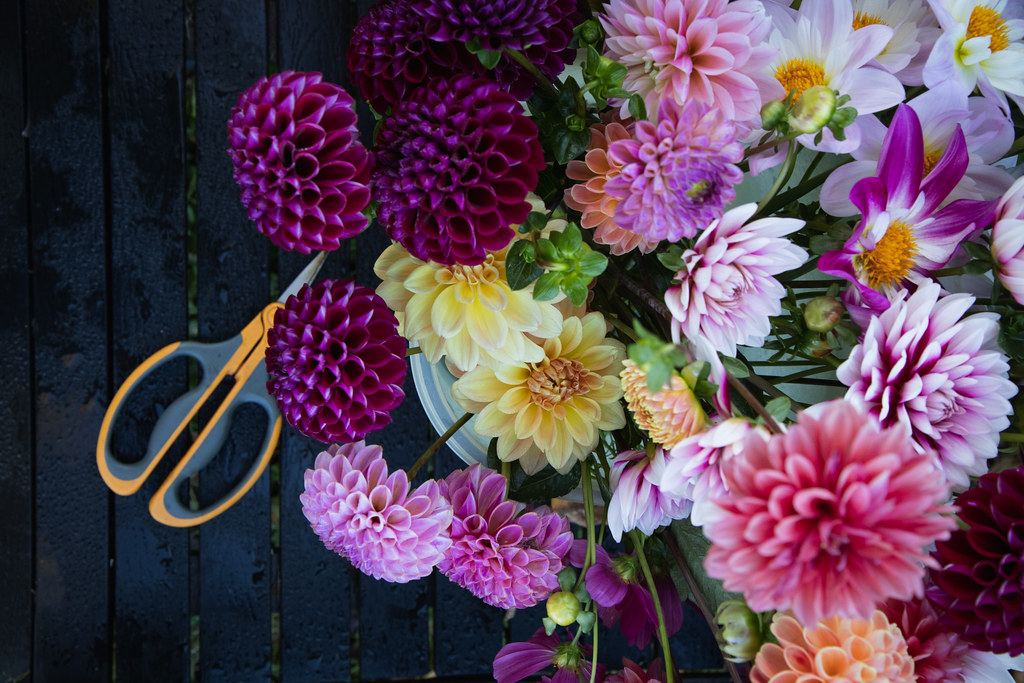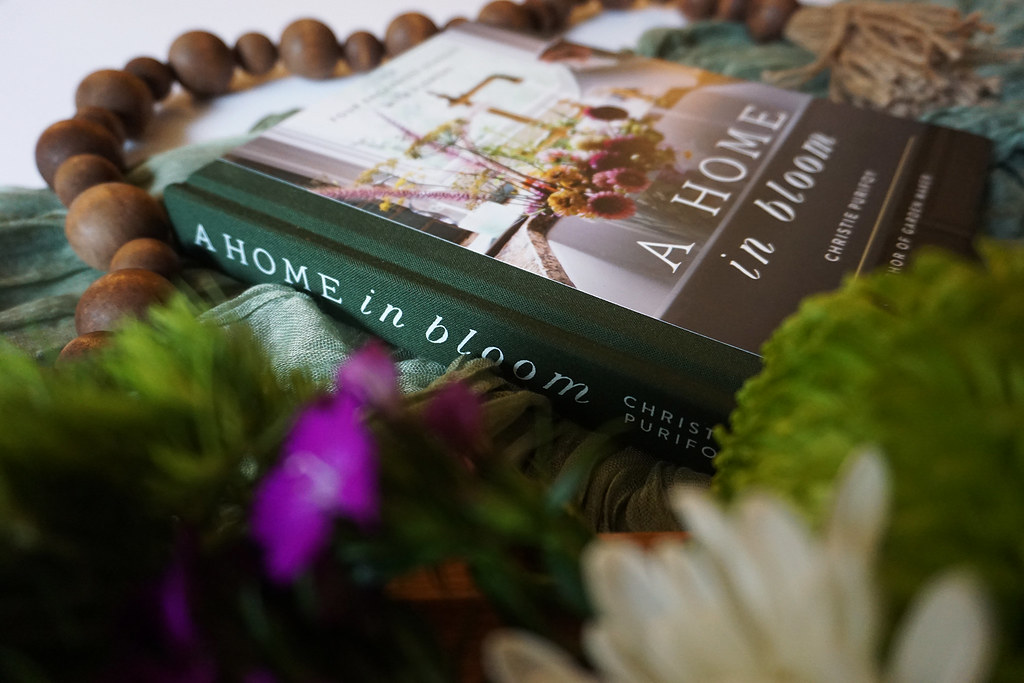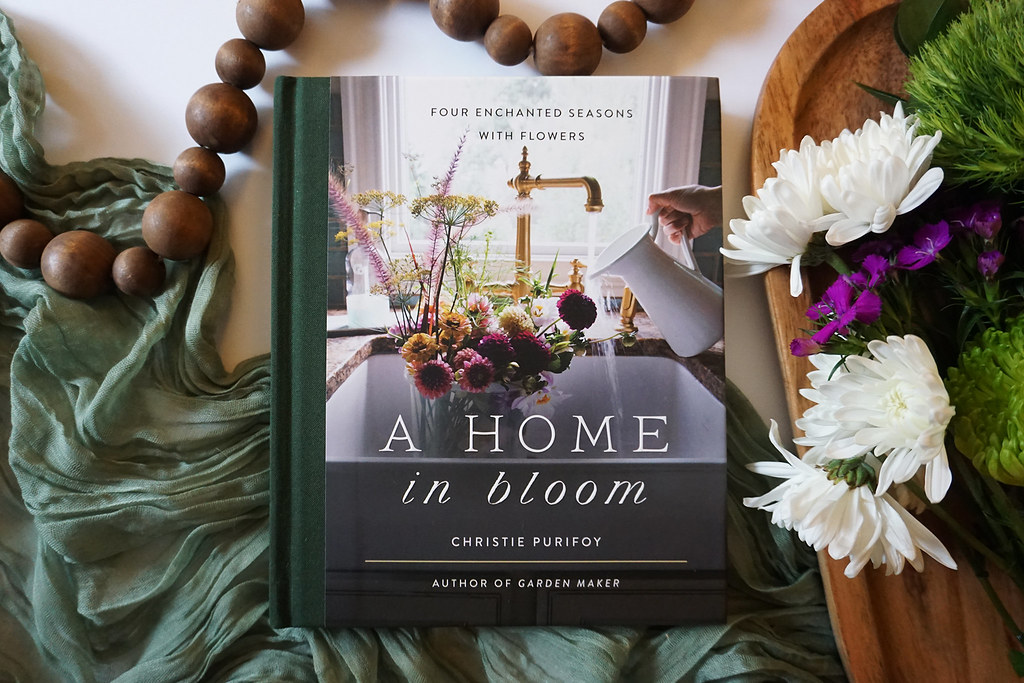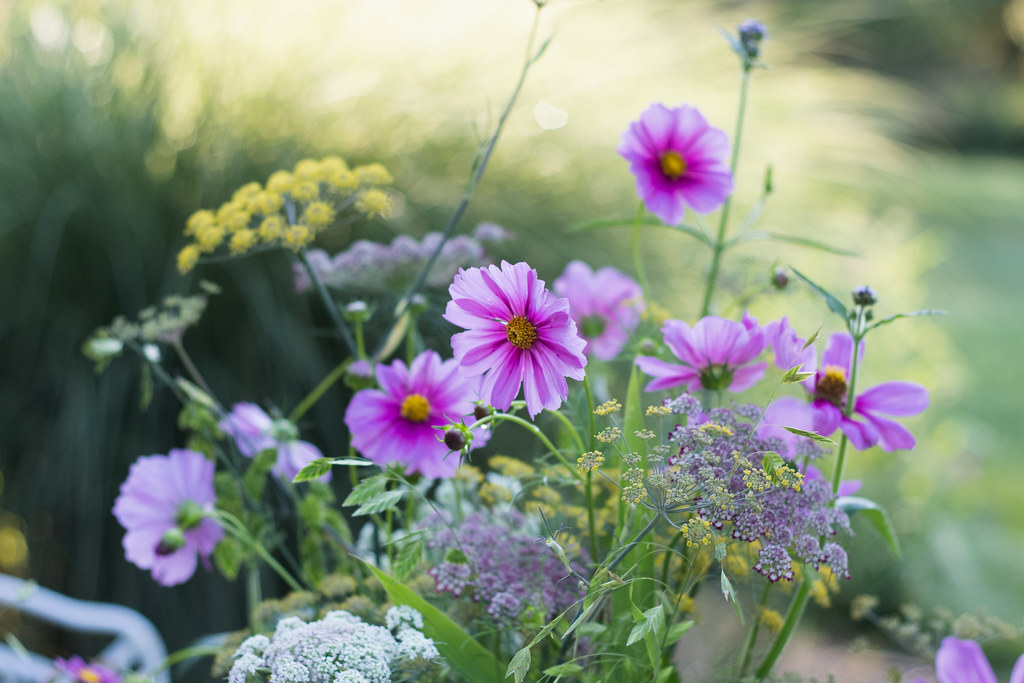Christie Purifoy is a writer who loves to grow flowers and community. Her latest book, A Home in Bloom is poetic and practical inspiration for rooting our lives in the goodness of a garden all four seasons of the year. It’s a grace to welcome my dear friend, Christie Purifoy, to the farm’s table today…
Guest Post by Christie Purifoy
How do we grow a house into a home? For ten years, I have asked this question on behalf of a red brick farmhouse which sits in a typical suburban neighborhood in the rolling, green countryside of Pennsylvania. But I asked the same question when I lived in a tiny apartment in small-town Texas, and again in a condominium on the Southside of Chicago, and yet again in a seashell-stuccoed house in north Florida.
If the whole earth is a garden made by God, then our homes are also gardens within a garden.
In each of these very different homes, I found that when I lived according to the seasonal rhythms of creation, houses really did become homes and bricks and mortar bloomed as surely as the pink geraniums I once tended in a third floor window box.
The poet farmer, Wendell Berry, famously wrote that “There are no unsacred places; / there are only sacred places / and desecrated places.”
That word desecrated conjures bleak landscapes scarred by war or natural disaster, and yet I think it also applies to the kinds of contemporary landscapes with which most of us are familiar: the asphalt sprawl of the suburbs, the endless fields of modern agribusiness, and the proliferation of chain stores that make it hard to tell the difference between one city and another.
We are so accomplished at making functional places for waiting, for passing through, and for consuming, but how do we make places able to embrace the fullness of our human selves?









We all know how dead we feel after too many minutes in a sun-deprived waiting room or too many hours in stop-and-go traffic. What if our homes could be places that brought us back to life?
If you long for beauty in a world that rarely has time for such nonsense, then consider this permission to pursue nonsense.
For that is what sacred places do. They restore us and renew us and resurrect our spirts. They help us reconnect to our own souls, and to other souls, and to the living ground beneath our feet. And they do this because, in some sense, they are themselves alive.
I’ve been reading C.S. Lewis’s Narnia stories to my youngest child, and it has surprised me to realize that the Narnia held frozen by the White Witch’s spell is not an enchanted place. It is a nearly dead place, asleep under all that snow. There is no birdsong, and there is no life.
When Aslan returns, the spell breaks, and Narnia is re-enchanted. The whole country comes awake again, and the trees clap their hands for sheer happiness. It is a little like the words we read in an ancient song from our world: “Let the fields be jubilant … let all the trees of the forest sing for joy” (Psalm 96:12).
If the whole earth is a garden made by God, then our homes are also gardens within a garden.
We are used to thinking of a garden only as an accessory to a house, but gardens are much more than backdrops.
Gardens are where our food comes from. Gardens are where beauty grows. Gardens are shelter. Gardens are also sacred spaces for private prayer and community celebration. Gardens are where we walk with God and work our muscles. They are living works of art.
What if you could live in a painting or a song? What if you entered a chapel or cathedral every time you stepped out to fetch the mail?









If you long for beauty in a world that rarely has time for such nonsense, then consider this permission to pursue nonsense. Brought together, house and garden tell a better story than either one alone.
The earth is singing a beautiful song. Why don’t we open our door and sing along?
And they can even help us to live a better story, one in tune with the praises of the trees. It is a universal story yet highly personal and particular, never quite the same from one place to the next. I am tending an utterly unique story here at an old farmhouse in Pennsylvania, for these clods of clay soil, these red bricks, and these exact plants are found only here. And you, too, are invited to care for the particular ground beneath your feet in order to tell your own, entirely singular, home story.
With a little effort and intention, it is possible to fill our homes with the music of life all year long, but it is so easy to do in summer, we almost have to work to keep the life out. And as a mother of four, I have worked at it. I have complained about the puppy’s muddy footprints and the pile of gravel—I mean, precious jewels—my daughter has piled on the table.
I have been annoyed when young children pick the flowers I call mine, and I have chosen not to bring a bunch of lilies inside because no matter how I trim the stamens new flowers will open and drop their bright orange pollen everywhere. Life is so messy sometimes.
“Clean and orderly are good things, but my tight-fisted control is not. A home in bloom is beautiful but rarely pristine.“
Clean and orderly are good things, but my tight-fisted control is not. A home in bloom is beautiful but rarely pristine. A home in bloom is always growing and changing in ways I can’t quite predict.
If we want to see our homes bloom, we don’t need to decorate. We simply need to live.
Cut the lilies we grew even if something becomes stained. Make the bouquet even though we’ll be picking up browned petals in a few days. Dig in and plant some seeds in that space between house and home. Sing a song and let the flowers sing theirs.
Do you know that the word enchanted holds the Latin word cantare inside of it like a seed? And cantare means to sing. There are those with a natural talent for music, but I am not one of them. I suppose there are those with a natural talent for horticulture, but I am not sure I am one of them either. It hardly matters when the abundance of life—not the stasis of perfection—is the goal. The earth is singing a beautiful song. Why don’t we open our door and sing along?

Christie Purifoy is the author of two memoirs, Roots and Sky and Placemaker, and now two full-color books of garden inspiration, Garden Maker, and the recently released A Home in Bloom: Four Enchanted Seasons With Flowers. She earned a PhD in English literature from the University of Chicago before trading the classroom for an old Pennsylvania farmhouse called Maplehurst, where she loves to welcome guests to the Maplehurst Black Barn and its online community the Black Barn Online. Each Wednesday she co-hosts a new episode of the Out of the Ordinary podcast with her longtime friend Lisa-Jo Baker, and she also shares her gardening expertise with members of the online gardening community the Black Barn Garden Club.
A Home in Bloom is your invitation to cultivate a way of life that is rooted in the vitality of a garden. There will be triumphs. There will be failures. There will be ordinary, daily miracles. But in all of it, and in every season, we will be growing a house into a home in bloom.
[ Our humble thanks to Harvest House Publishers for their partnership in today’s devotional. ]







